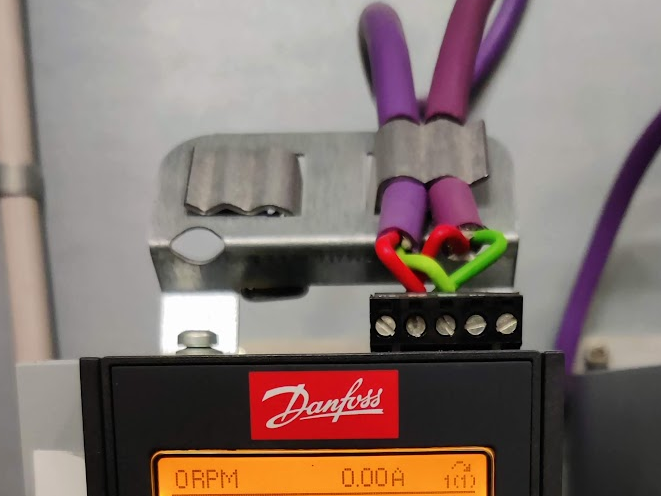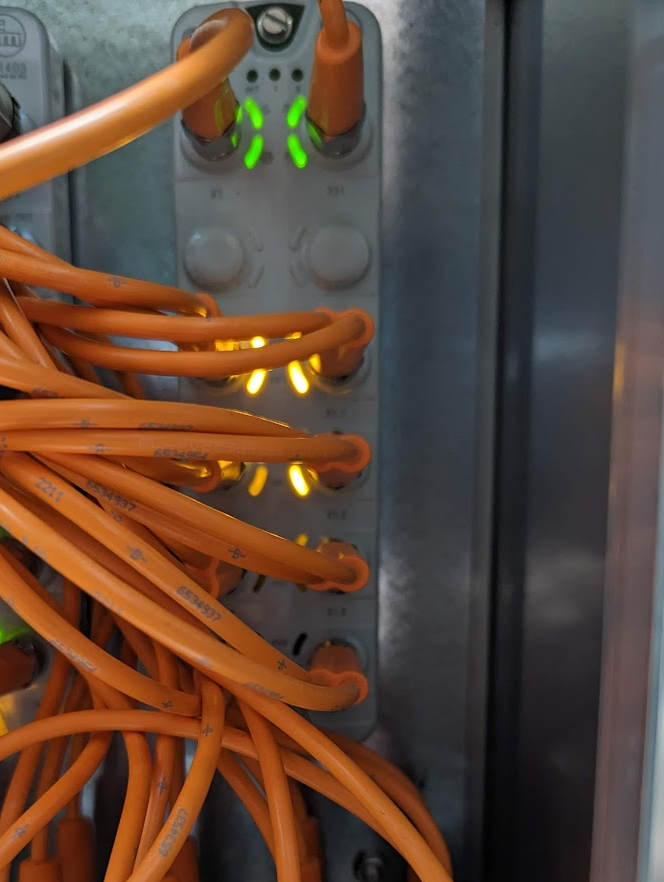
In today’s fast-paced industrial landscape, automation is at the forefront of enhancing productivity and efficiency. Therefor Industrial automation protocols play a pivotal role in ensuring seamless communication between various components and systems within manufacturing and industrial processes. These protocols serve as the digital language that allows machines and devices to exchange data and instructions. In this article, we will explore five typical industrial automation protocols, including Profinet, Profibus, I/O Link, EtherNet/IP, and Modbus. Furthermore, these protocols are instrumental in shaping the future of manufacturing and industrial automation. Understanding these protocols is essential for anyone involved in the field of automation and Industry 4.0, as they form the backbone of modern industrial systems.
Profinet

Profinet, short for “Process Field Network,” is a widely adopted industrial automation protocol. That has gained prominence in the manufacturing and automation industries. Developed by Siemens, Profinet is known for its high-speed communication capabilities and flexibility. Therefor making it a valuable choice for various applications. It is an Ethernet-based protocol designed to provide real-time data exchange. Furthermore with seamless integration of various industrial devices, including sensors, controllers, and drives.
Profinet’s versatility allows for both process automation and factory automation applications. Making it an essential technology in the journey toward Industry 4.0. Furthermore, with its support for advanced features such as motion control, safety, and easy device configuration. Profinet continues to play a crucial role in optimizing industrial processes and ensuring the efficient operation of modern manufacturing systems.
Robustness
Profinet is highly regarded for its robustness and ability to handle the demands of industrial environments. It operates over standard Ethernet infrastructure, which not only simplifies installation but also enables seamless integration with existing IT systems. Moreover, Profinet offers various communication mechanisms, including the use of TCP/IP and UDP protocols, allowing for both deterministic real-time communication and non-real-time data exchange. This flexibility makes it suitable for a wide range of applications, ranging from high-speed production lines to complex distributed control systems.
Furthermore, Profinet supports device auto-configuration, making it easier to add and replace devices within a network. This feature reduces commissioning time and maintenance efforts, adding to its efficiency. Profinet’s compatibility with a variety of industrial devices and controllers from different manufacturers ensures interoperability, fostering an open and collaborative approach to automation technology.
Profinet’s adaptability, real-time capabilities, and extensive industry adoption have solidified its place as a leading industrial automation protocol. As the manufacturing landscape continues to evolve, Profinet remains a key enabler of smart factories and Industry 4.0 initiatives, contributing to enhanced productivity, reduced downtime, and improved overall efficiency in industrial processes.
Profibus
Profibus, which stands for “Process Field Bus,” is another prominent industrial communication protocol widely used in manufacturing and automation applications. Developed by a consortium of companies, including Siemens, Profibus has been a standard for industrial communication for many years. Profibus comes in two main variants: Profibus DP (Decentralized Peripherals) and Profibus PA (Process Automation). Profibus DP is commonly used for factory and process automation. While Profibus PA is designed for process automation applications, especially in the process industry. This versatile protocol provides reliable, high-speed communication between various field devices, such as sensors, actuators, controllers, and other industrial equipment. Profibus has gained popularity due to its ability to transmit data over long distances and robustness. The capability to connect numerous devices on a single bus, making it an excellent choice for large-scale industrial systems.
Profibus has played a significant role in optimizing industrial processes, offering improved data exchange, diagnostics, and real-time control capabilities. Therefor with its extensive adoption and compatibility with various devices. Profibus continues to be a trusted choice for industrial communication. In example Contributing to enhanced automation and operational efficiency in manufacturing and process industries.
I/O link

I/O Link is a relatively newer industrial communication protocol that has gained rapid adoption in recent years, particularly in the field of factory automation. It serves as a standardized point-to-point connection between sensors actuators and higher-level controllers. I/O Link is known for its versatility and the ability to provide detailed data from sensors and devices. It is offering more than just simple on/off signals. Allowing for digital communication and parameterization of various devices in the field. Which is making it easier to monitor and control equipment in real-time.
One of the key advantages of I/O Link is its ability to connect sensors and actuators to standard industrial field buses, such as Profibus, Profinet, and EtherNet/IP. Enabling seamless integration of these devices into larger automation systems. This protocol has brought about a significant improvement in device diagnostics. Making it easier to detect issues, reduce downtime, and streamline maintenance processes in industrial environments.
I/O Link’s adaptability, ease of integration, and enhanced device communication have made it a valuable tool in modern industrial automation. Allowing for more intelligent and data-driven decision-making within manufacturing and assembly processes. As the industrial landscape continues to evolve, I/O Link’s role in facilitating flexible and efficient automation is set to become even more prominent.
EtherNet/IP

EtherNet/IP, an extension of the widely used Ethernet technology, is a leading industrial communication protocol designed for seamless integration within manufacturing and automation systems. Developed by ODVA (Open DeviceNet Vendor Association). Furthermore EtherNet/IP leverages the advantages of standard Ethernet for real-time control and information exchange in industrial settings. It has become a popular choice in industries for its ability to unify control, safety, and motion applications onto a single network. Furthermore simplifying architecture and reducing hardware costs. With its support for CIP (Common Industrial Protocol), EtherNet/IP allows devices from different manufacturers to communicate effectively. Therefor promoting interoperability across various industrial devices. This open, scalable, and high-performance protocol is well-suited for applications ranging from discrete manufacturing to process control. Furthermore played a pivotal role in enabling the convergence of information technology (IT) and operational technology (OT) in the industrial landscape.
EtherNet/IP’s capability to provide seamless, real-time communication and data sharing has transformed modern industrial automation by fostering greater connectivity, flexibility, and efficiency. Its adaptability and wide industry adoption make it a central component in the development of smart factories and Industry 4.0 initiatives. in addition data-driven decision-making and optimized operations are paramount.
Modbus
Modbus is one of the oldest and most widely used industrial communication protocols, known for its simplicity and reliability. Developed in the late 1970s, it has stood the test of time and remains a fundamental part of industrial automation and process control systems. Modbus operates on a master-slave architecture. With a master device typically a programmable logic controller (PLC) or computer. A slave devices being various sensors, actuators, and controllers. It uses a straightforward, ASCII-based communication format, making it easy to implement and widely compatible with a wide range of devices. Modbus comes in several variants, including Modbus RTU, Modbus ASCII, and Modbus TCP/IP, which support different physical layers and communication methods, making it adaptable to various industrial applications. Modbus has been instrumental in providing cost-effective and efficient communication between devices, allowing for the control and monitoring of industrial processes.
Despite its age, Modbus remains relevant in modern industrial environments, offering a dependable, cost-effective solution for communicating with legacy and newer industrial equipment. Its straightforward design and widespread acceptance make it a viable choice for applications where simplicity, stability, and broad compatibility are essential.
Types
Modbus is one of the oldest and most widely used industrial communication protocols, known for its simplicity and reliability. Developed in the late 1970s, it has stood the test of time and remains a fundamental part of industrial automation and process control systems. Modbus operates on a master-slave architecture. With a master device typically a programmable logic controller (PLC) or computer. A slave devices being various sensors, actuators, and controllers. It uses a straightforward, ASCII-based communication format, making it easy to implement and widely compatible with a wide range of devices.
Modbus comes in several variants, including Modbus RTU, which is a binary form of Modbus commonly used in serial communication; Modbus ASCII, which uses human-readable ASCII characters for communication; and Modbus TCP/IP, which enables Modbus communication over Ethernet networks, allowing for faster and more widespread integration. These Modbus variants support different physical layers and communication methods, making them adaptable to various industrial applications. Modbus has been instrumental in providing cost-effective and efficient communication between devices, allowing for the control and monitoring of industrial processes.
The Protocols
In conclusion, these five typical Industrial Automation Protocols, including Profinet, Profibus, I/O Link, EtherNet/IP, and Modbus. Representing the backbone of modern manufacturing and automation. Each protocol offers unique advantages and capabilities that cater to a diverse array of industrial applications. As technology continues to advance, the world of industrial automation evolves. These protocols play a vital role in shaping the future of smart factories and Industry 4.0. Understanding and leveraging these protocols is essential for professionals in the field, as they hold the key to improved productivity, enhanced efficiency. The realization of the full potential of industrial automation. The choice of the right protocol depends on the specific requirements of a given application, and with ongoing innovation. We can expect even more sophisticated and integrated solutions to further optimize industrial processes. You can read more about the use of these in Industry 4.0.

